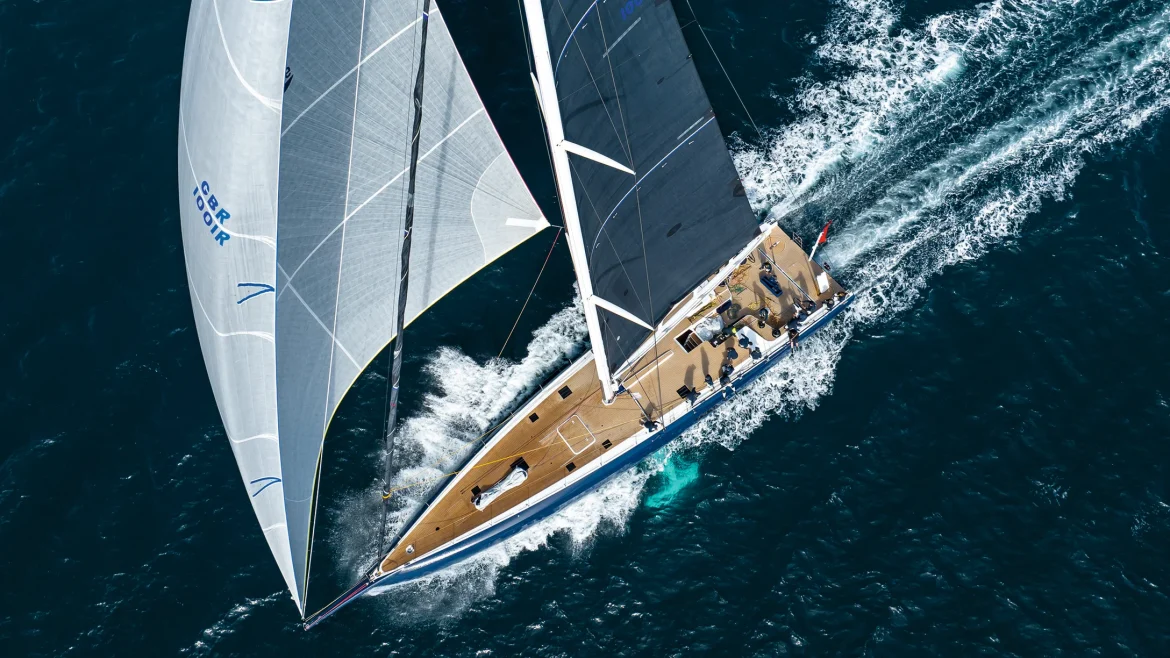Sam Fortescue believes Sir Lindsay Owen-Jones’s new Magic Carpete, with its sculpted sheer line, go-go-gadget keel, lifting rudders and fully electric power train, leaves convention floundering in its glistening wake.
In the exalted realm of maxi yacht racing—where carbon fibre, cutting-edge tech, and centuries-old seamanship meet—few names evoke as much admiration as Magic Carpet. For over two decades, this fleet of strikingly fast, technologically daring yachts has dominated the Mediterranean regatta circuit under the watchful helm of Sir Lindsay Owen-Jones. With wins etched across the map—from Porto Cervo to line honours at the Giraglia—the Magic Carpet name has become synonymous with elegant power, relentless innovation, and a deep respect for the art of sailing.
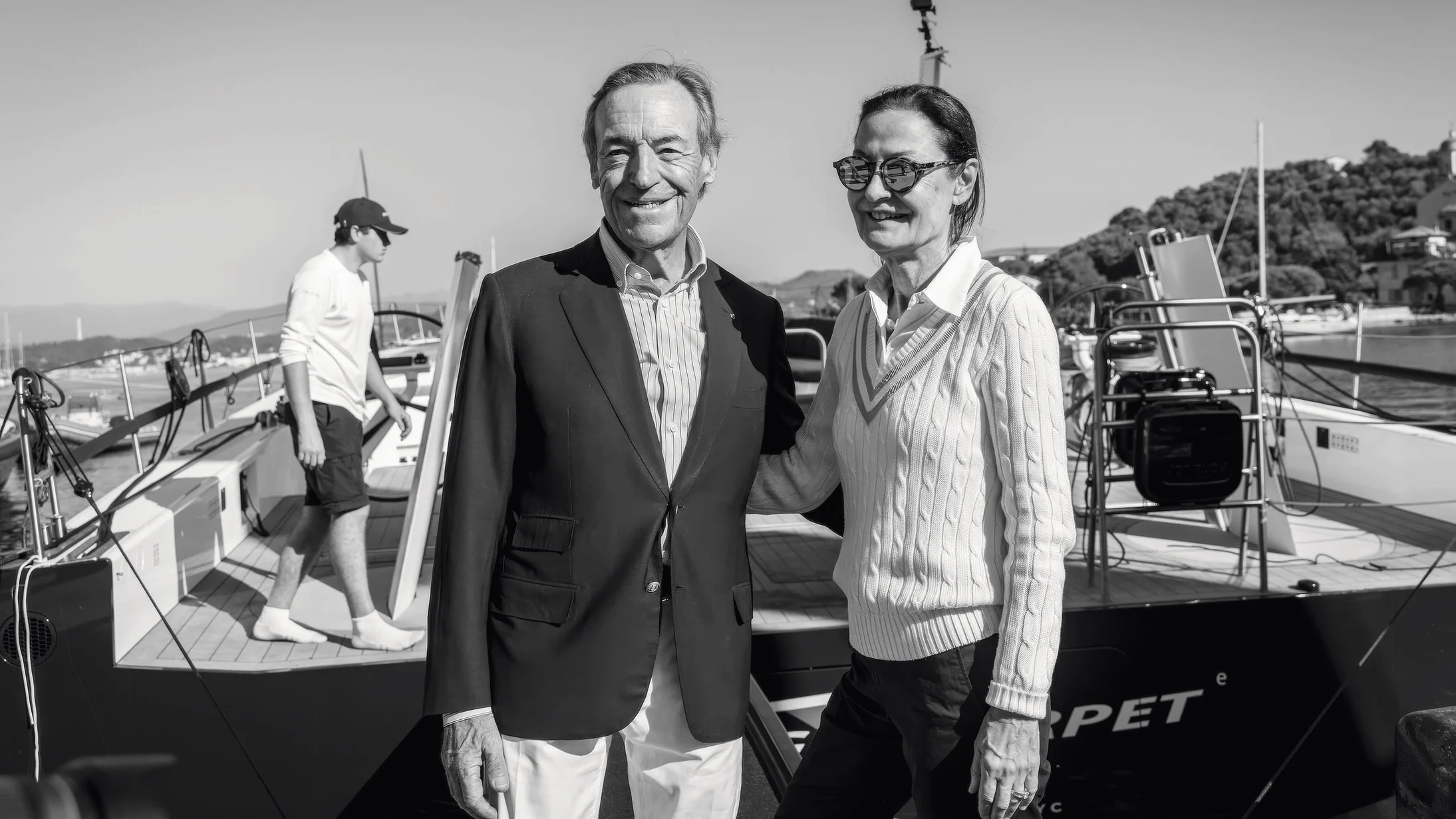
Now, a fourth chapter in this remarkable saga has been unveiled: Magic Carpet E, an electrified, reimagined marvel that dares to rewrite what a racing maxi can be. It is not merely an upgrade—it’s a revolution. Lighter, sleeker, smarter, and sustainable, the newest Magic Carpet is poised to disrupt the status quo of the maxi racing world. Again.
A Radical Departure
The new Magic Carpet marks a bold step away from her predecessors. Gone is the longstanding partnership with Wally, the yard that helped birth the previous boats. In their place stands a new team: naval architect Guillaume Verdier—renowned for America’s Cup and Ultim designs—and the Persico shipyard, famed for its precision aerospace technology and race-boat expertise.
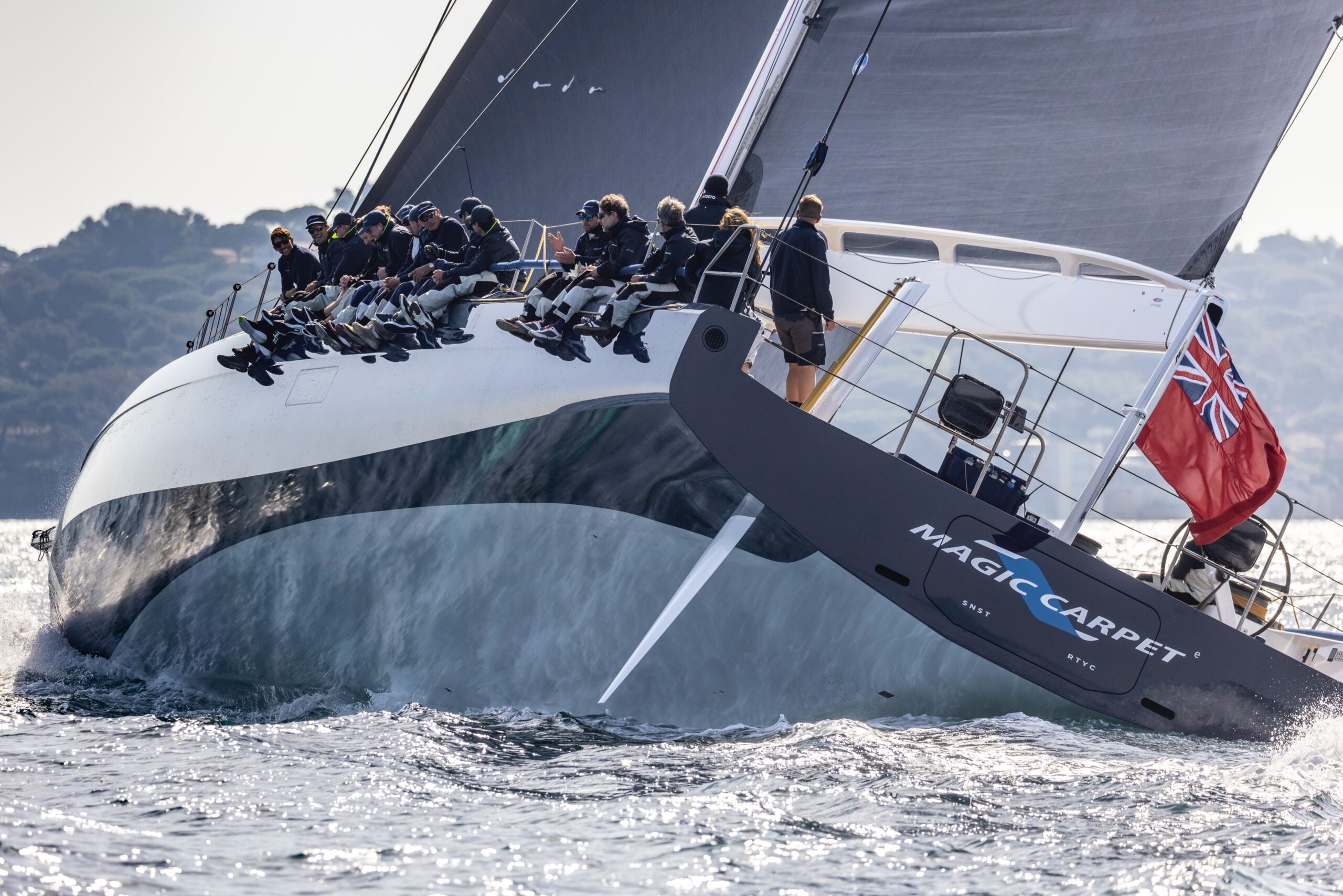
“This boat was a step too far for Wally,” admits Sir Lindsay. “It wasn’t our choice, but this project needed risk and radical thinking. Luca [Bassani] would have liked it to bear the Wally name, and in many ways, it still carries his spirit.”
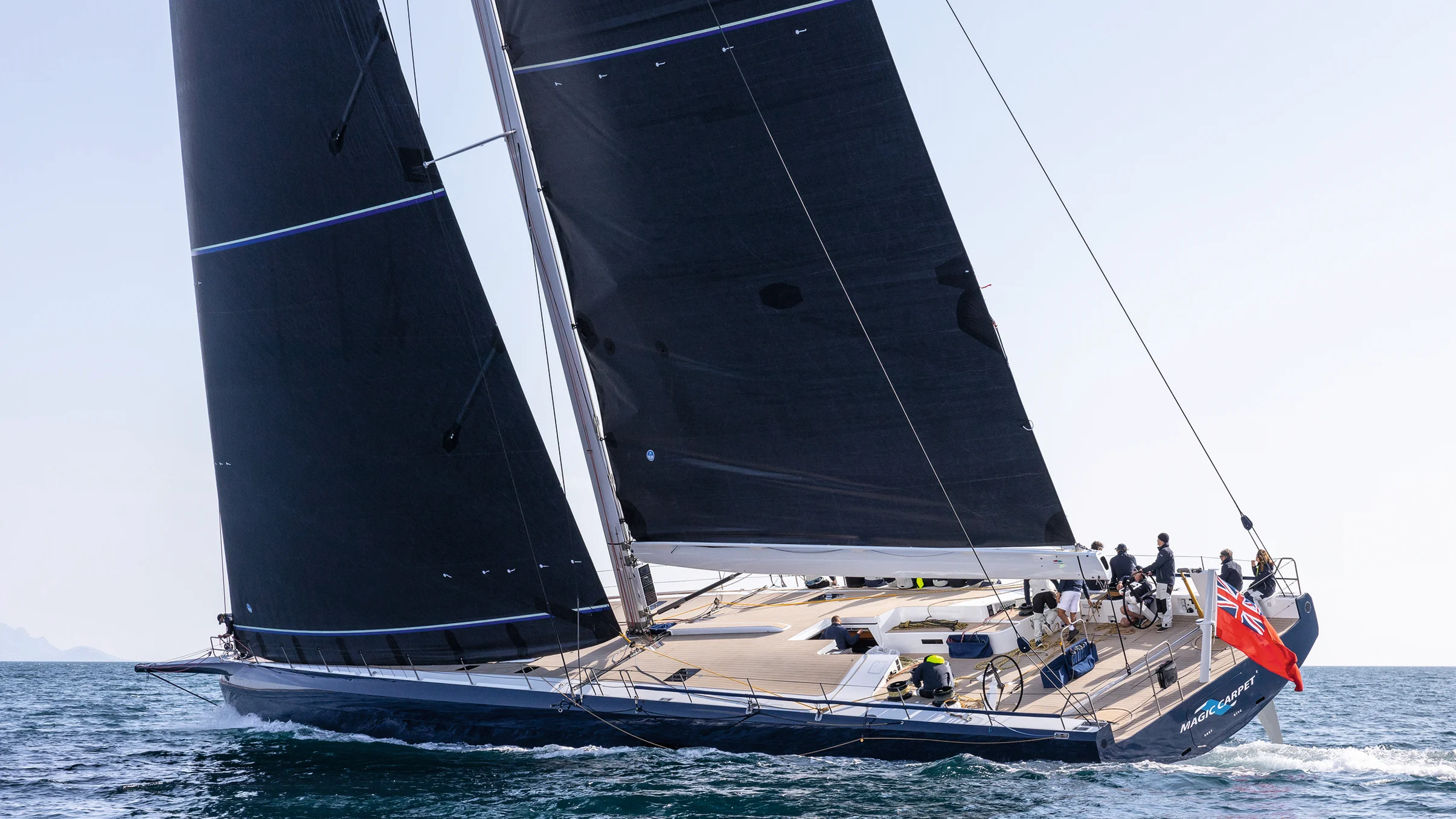
That spirit may still be there, but the design itself is unmistakably Verdier. A master of engineering minimalism, Verdier, along with partner Axel de Beaufort, approached the hull with the mindset of an aircraft designer. The result? A yacht 10 tonnes lighter than her predecessor, built with aerospace precision using Persico’s automated tape-laying machine (ATM)—a first for a vessel of this size.
“The curved sheerline? That’s not for looks,” says de Beaufort. “It’s pure engineering. Just like a beam, it manages structural loads. Every shape has a purpose.”
Power in Silence: Fully Electric Innovation
In a world where most racing maxis run loud, burning diesel to feed their demanding hydraulic systems, Magic Carpet E whispers through the water. With a massive 101kWh battery bank and twin custom 220kW electric motors, her sails and systems are powered entirely by electricity. A third motor propels her silently through the sea, making her one of the most advanced and cleanest boats of her class.
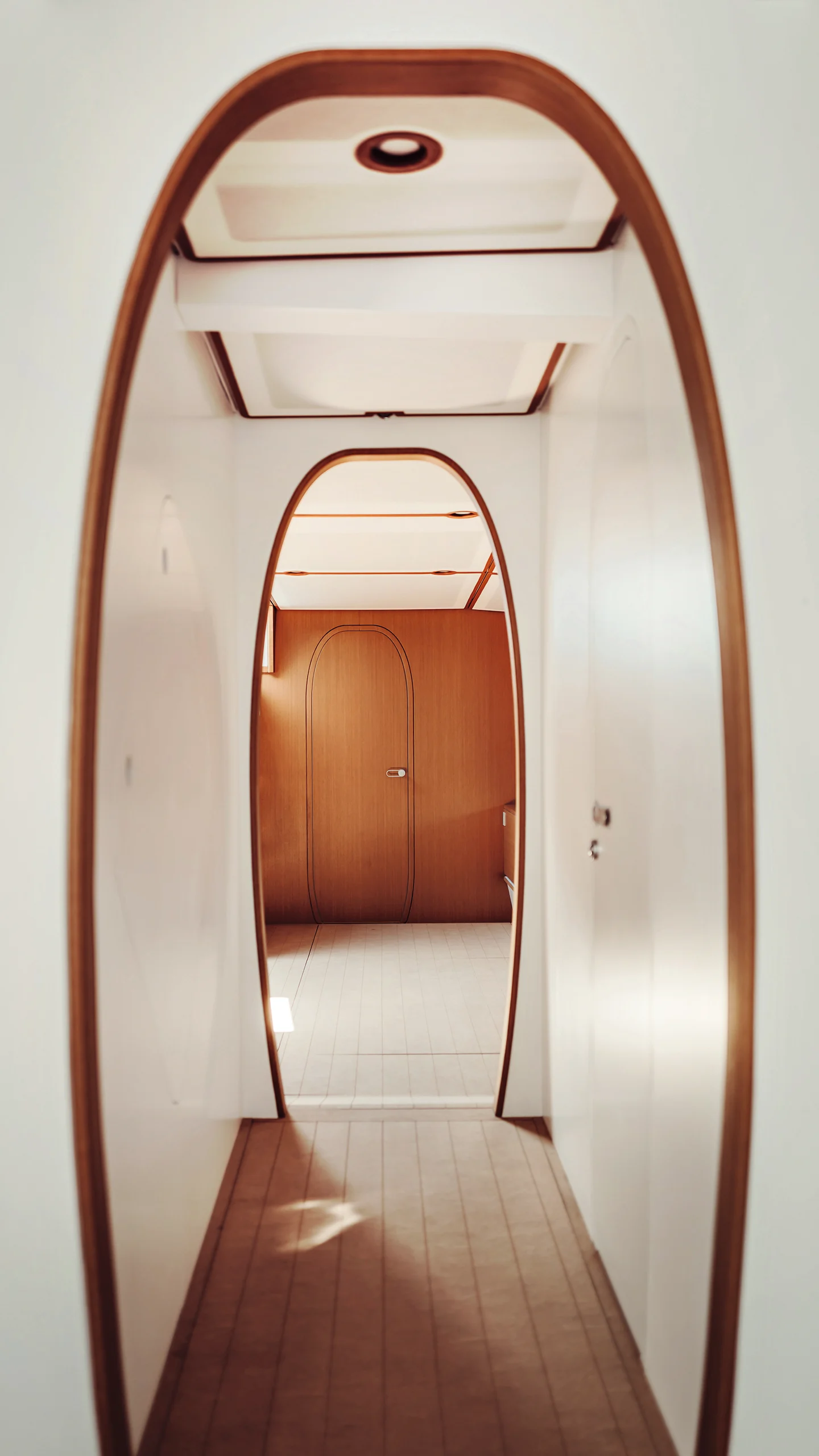
Partnering with Fortescue Zero (formerly Williams Advanced Engineering), the team developed a system inspired by Formula E—lightweight, high-power-density electric drive systems with secrets closely guarded. Captain Danny Gallichan, who has helmed every Magic Carpet to date, says with a smile, “There’s nothing comparable in the marine sector right now.”
Keel Genius: An Engineering First
One of the yacht’s most audacious innovations lies beneath the surface: a massive swing keel. At 9.6 tonnes, the bulb isn’t just retractable—it swings back 60 degrees and cants up to 45 degrees on either side. The entire operation is managed by an intricate trio of hydraulic systems and can be executed in under two minutes.
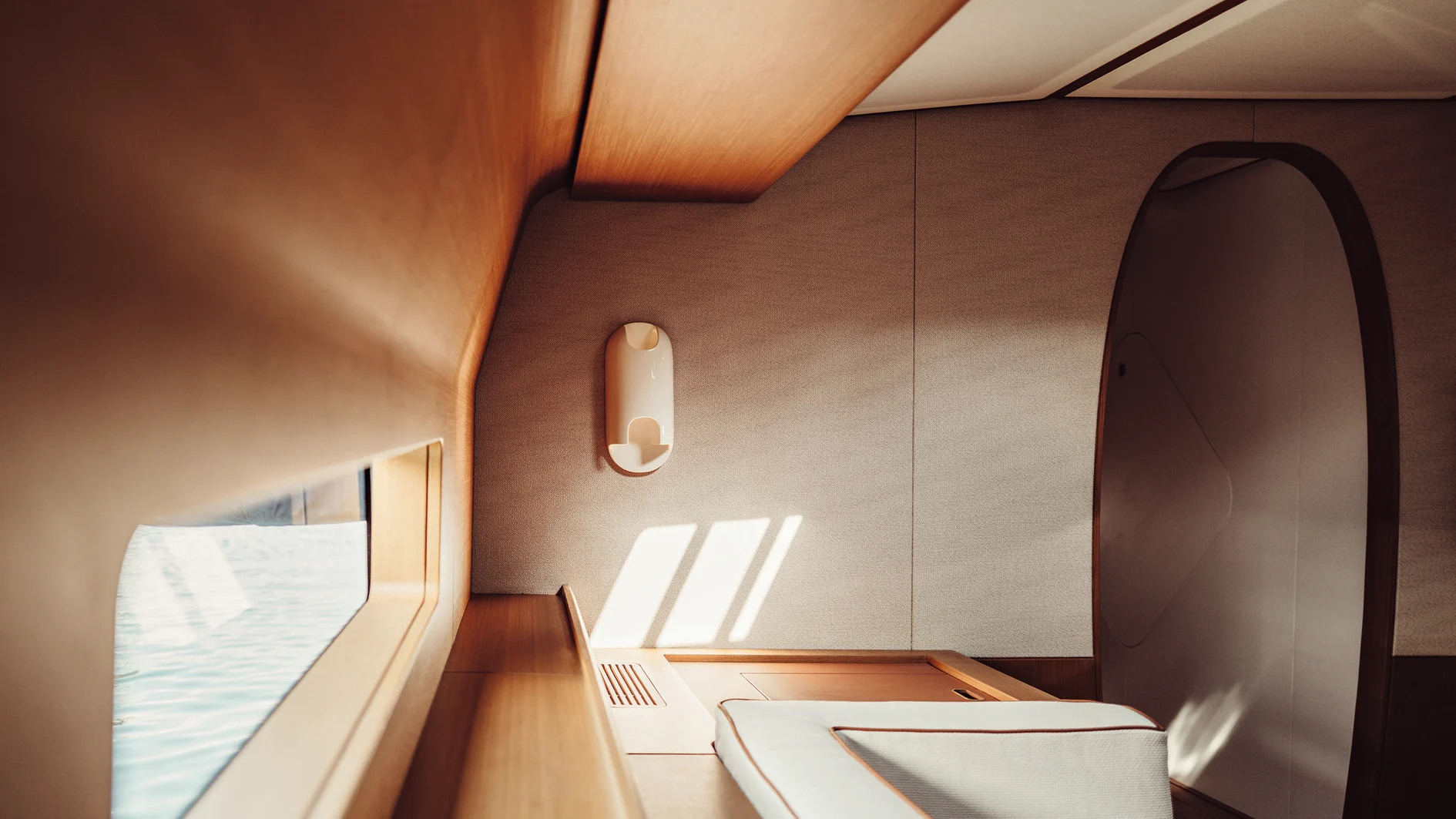
Why not a traditional lifting keel? “Too much weight, too high a center of gravity,” says Verdier. “This is a smarter solution, with the bulb staying horizontal even as it swings.”
Add to that a forward canard—essentially a mini keel—that helps maintain course and reduces leeway when the main keel is canted. It’s joystick-controlled from the helm. “Set it right,” Owen-Jones tells me with pride, “and we actually make positive leeway upwind. That’s three degrees on our heading we used to lose.”
A Space Odyssey Below Deck
Racing credentials aside, Magic Carpet E is also a cruiser. The brief was clear: make it beautiful, but make it light. De Beaufort approached the interior like a spacecraft, stripping it back to essentials but with flair. The doors aren’t square; they’re elliptical structural cut-outs. Wall panels are veneer-glued foam. The ceilings are dressed in acoustic fabric. The entire interior, including a spacious saloon, two guest cabins, and an owner’s suite finished in custom Hermès Horizons upholstery, weighs just under two tonnes.
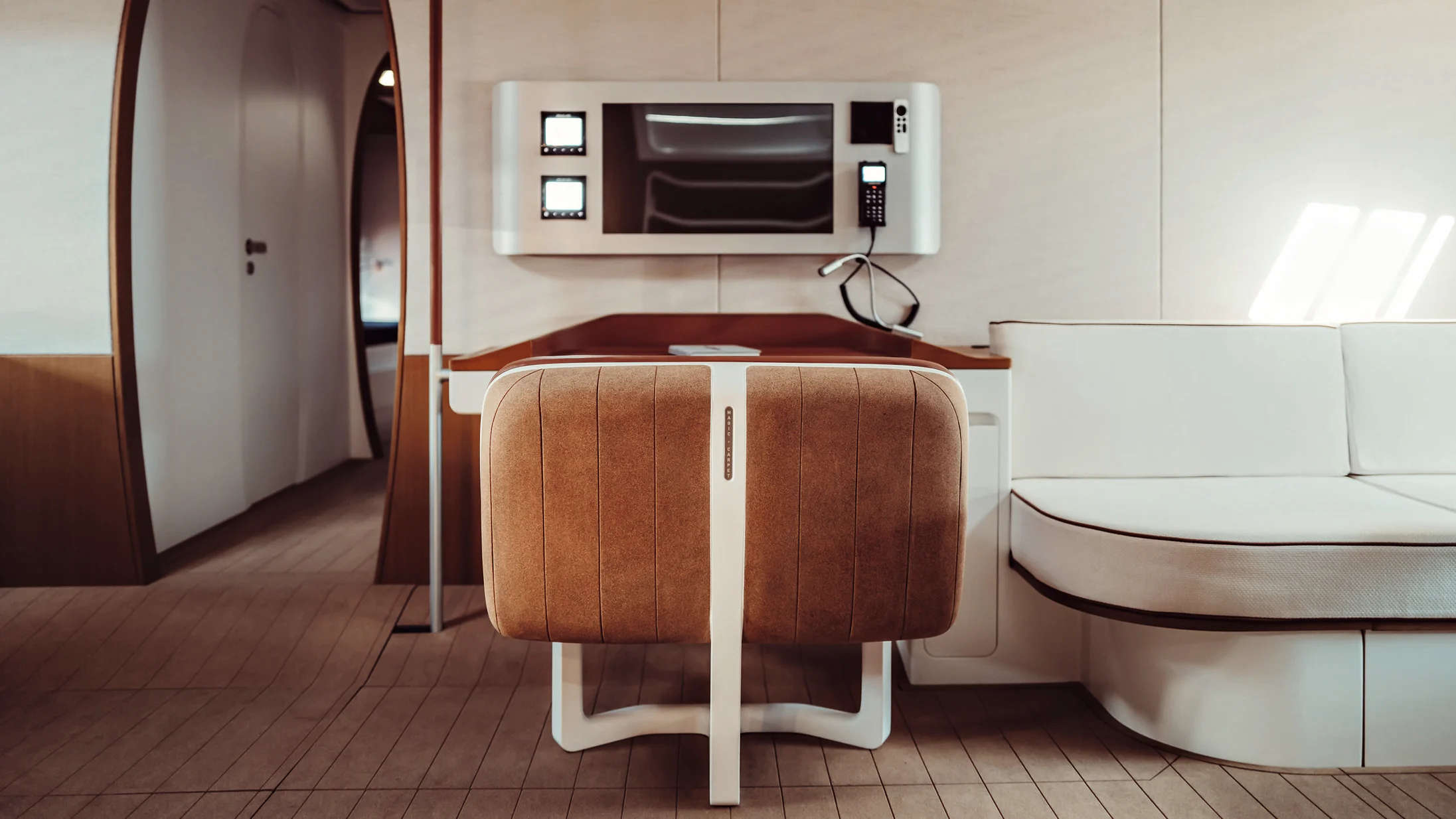
“We didn’t try to hide the structure,” de Beaufort says. “We celebrated it.”
Sea Trials in Saint-Tropez
Under a soft spring sun in Saint-Tropez, Magic Carpet E slips from the dock. With the main and jib hoisted, her North 3Di sails bite into the breeze, and the acceleration is instant. Twelve knots upwind. Thirteen. By afternoon, as the wind climbs to 18 knots, we’re clocking 20 knots reaching.
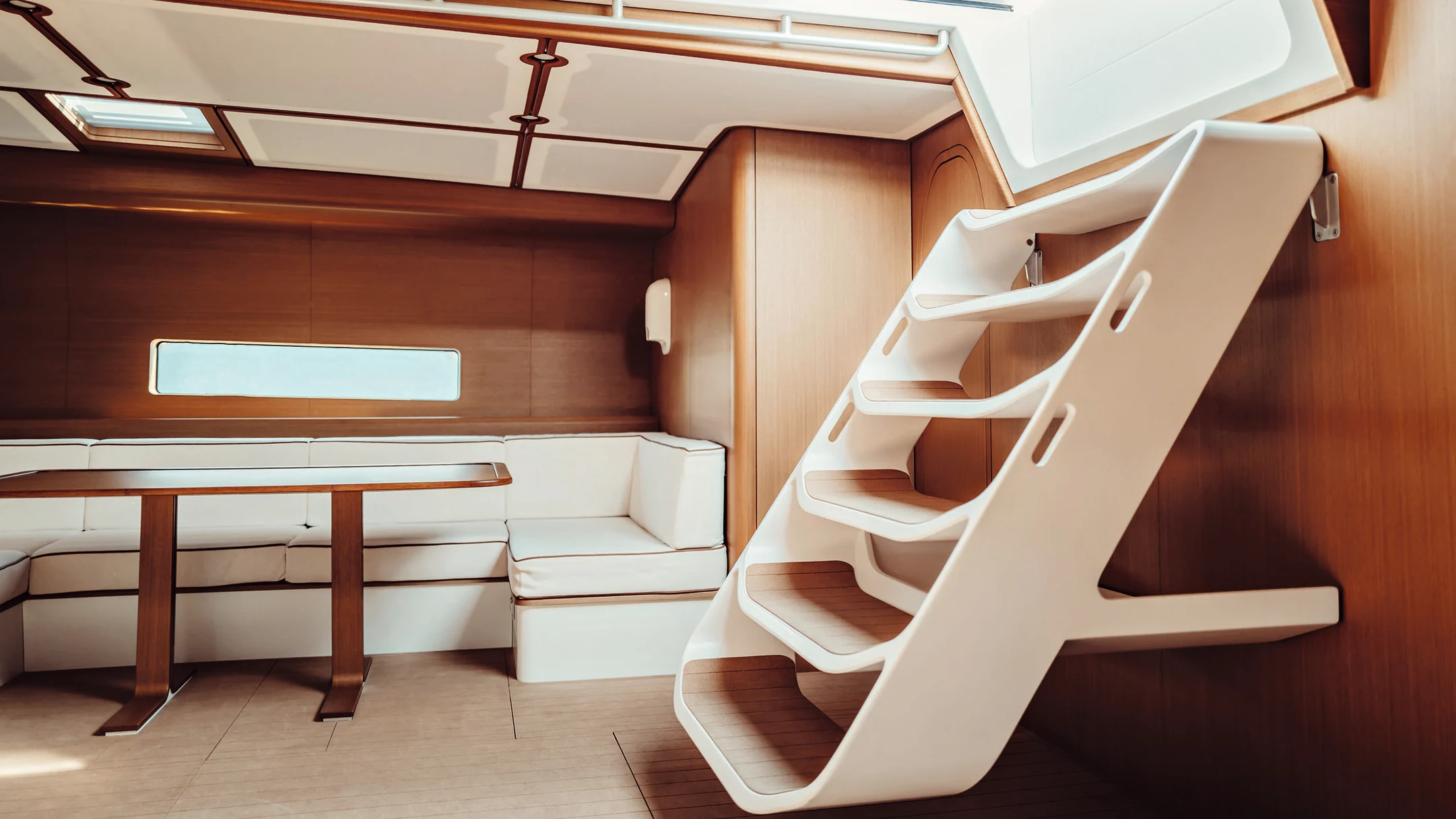
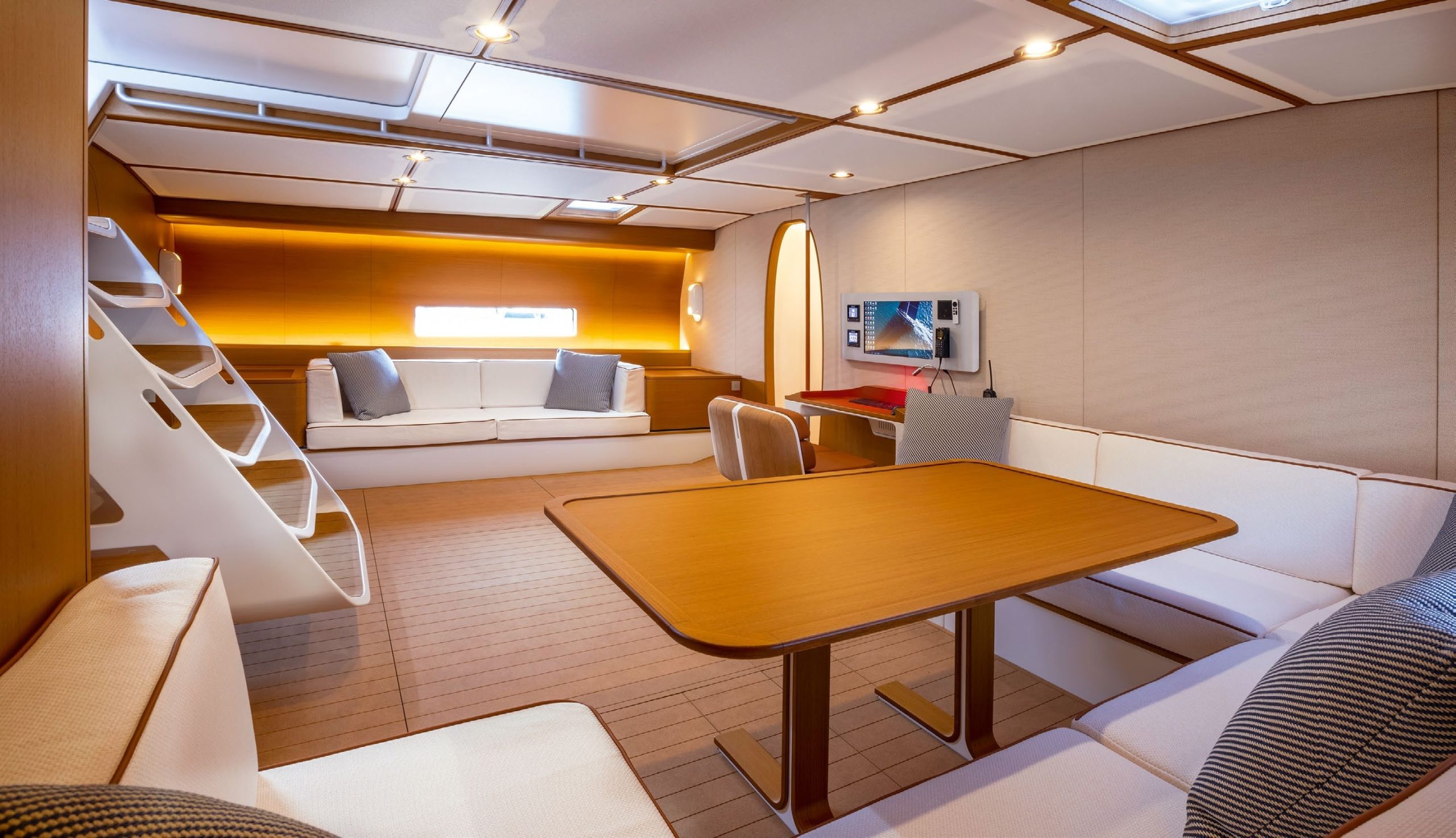
The helm is crisp, the deck serene. The hydraulic hums are familiar, but the absence of diesel growl is remarkable. At the helm, Owen-Jones looks at home. “It’s the quiet that strikes you,” he says. “You can actually feel the boat.”
Beneath the deck, every kilo has been considered. Sole boards can be swapped out for lightweight carbon ones. Closets are removable for race mode. Even the windward rudder lifts 1.5 metres to reduce drag in light airs, thanks to America’s Cup-grade hydraulics from Cariboni.
Setting a New Standard
As Magic Carpet E heads into her debut season—PalmaVela, the European Championships in Sorrento, Giraglia, the Maxi Yacht Rolex Cup, Les Voiles de Saint-Tropez—the excitement is palpable. But Owen-Jones, ever the gentleman competitor, remains cautious.
“My wife taught me to be superstitious,” he says with a smile, nodding at Cristina, who’s bundled up in the cockpit. “But yes, we’ve had four to five weeks of sailing before PalmaVela. That’s rare. We’re ready.”
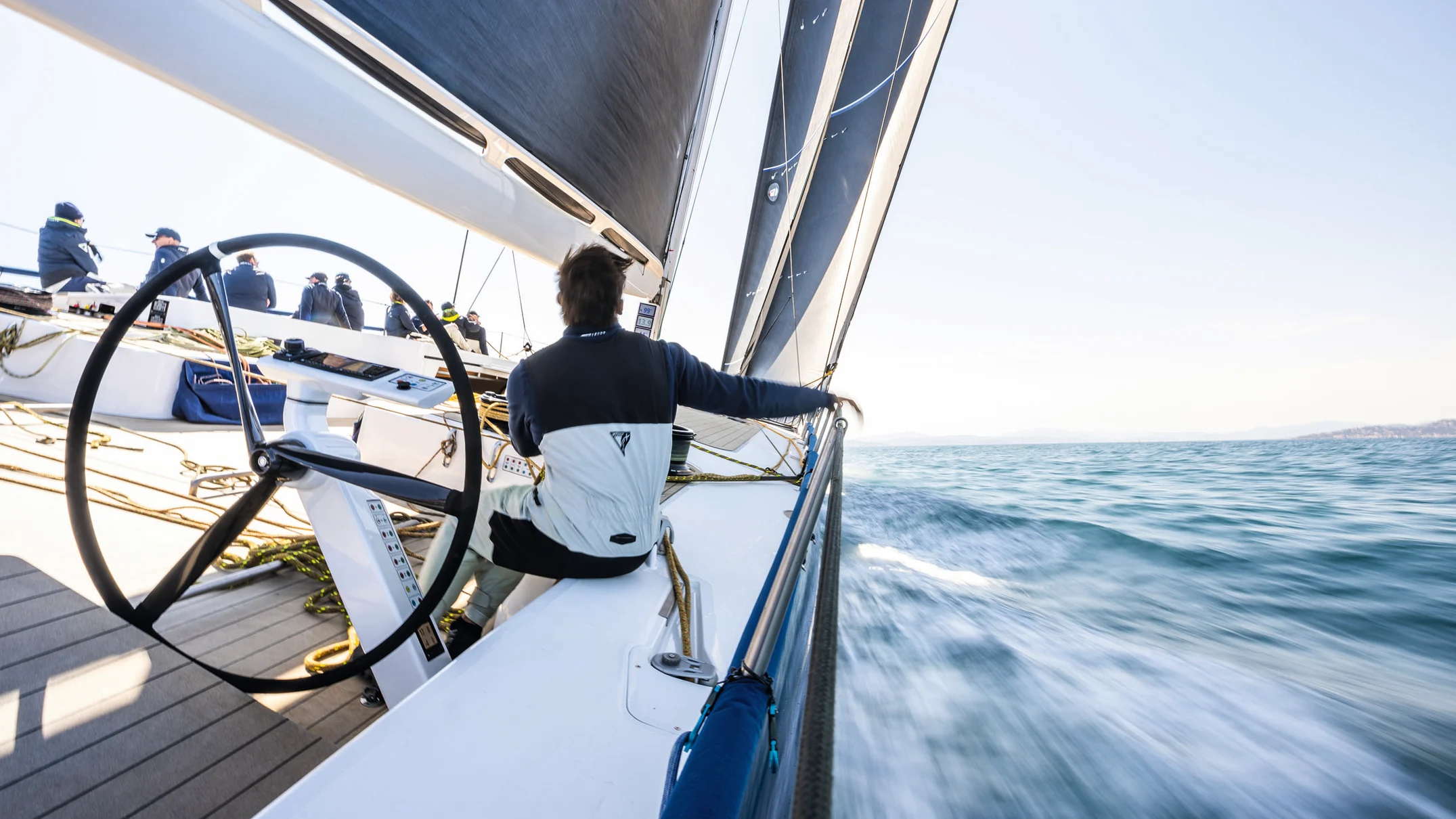
But this is no guaranteed runaway. Boats like V, Galateia, Leopard 3, and Blackjack are fiercely competitive, and Magic Carpet E is optimised for light Med breezes. A blowy race like last year’s Giraglia could level the playing field.
Still, the team’s innovations are already causing ripples. “I reckon we’ve got about two years,” Bell says, referring to how long this design advantage will last. “But that’s the game.” And if others follow, that’s a legacy Sir Lindsay is happy to leave.
After all, this is the man who offered Magic Carpet 3 at a $100,000 discount—if the buyer agreed to race it in the Med for a season. “The setup and performance data were already there,” he shrugs. “It was a good deal.” And perhaps, in his heart, he’s quietly hoping to one day beat it.



